Shift4 – InCharge Restaurant Operation Management App
InCharge is a mobile application designed for restaurant managers, providing real-time data on sales and staff performance to enhance efficiency and reduce costs.
Client: Shift4
Platforms: iOS Native App – iPhone
Role: Lead Product Designer & Manager
Design Team: 2 UX Designers
Client Team: Stakeholder, SME, Engineering Lead & Engineering Team
Time Frame: 4 Months

**View the final designs and project outcomes by scrolling to the bottom of the screen.
Context
-
Restaurant managers operate in fast-paced, dynamic environments, balancing responsibilities such as customer service, staff management, and operational performance.
-
Restaurants operate on tight profit margins, making it crucial for managers to track sales, manage teams, and optimize table turnover effectively.
-
Effective decision-making relies on accurate, real-time data, but many operations still lack integrated solutions to provide these insights seamlessly.
Problem
Restaurant Managers Impact:
-
Complicated Systems and Manual Work: Disconnected systems and manual processes make it difficult to get a clear picture of operations, leading to delays and inefficiencies.
-
Stressful and Inefficient Workflows: Complex tools and cumbersome processes increase stress, lower motivation, and contribute to staff turnover.
-
Limited Access to Real-Time Insights: Without reliable tools, managers struggle to make quick, informed decisions to keep operations running smoothly.
-
Inconsistent Service Delivery: Issues with table management, order tracking, and staff training result in uneven customer experiences and reduced loyalty.
Business Impact
-
Disconnected Systems and Inefficiencies: Lack of integrated tools across locations creates operational bottlenecks, increasing labor costs and reducing profit margins.
-
Inconsistent Service Quality: Variability in performance across locations harms the brand’s reputation and makes it difficult to maintain customer loyalty.
-
Limited Scalability: Current systems often lack the ability to scale efficiently, hindering growth and creating challenges for multi-location management.
-
Missed Opportunities for Optimization: Inadequate access to real-time data prevents proactive decision-making, leading to wasted resources and missed revenue opportunities.
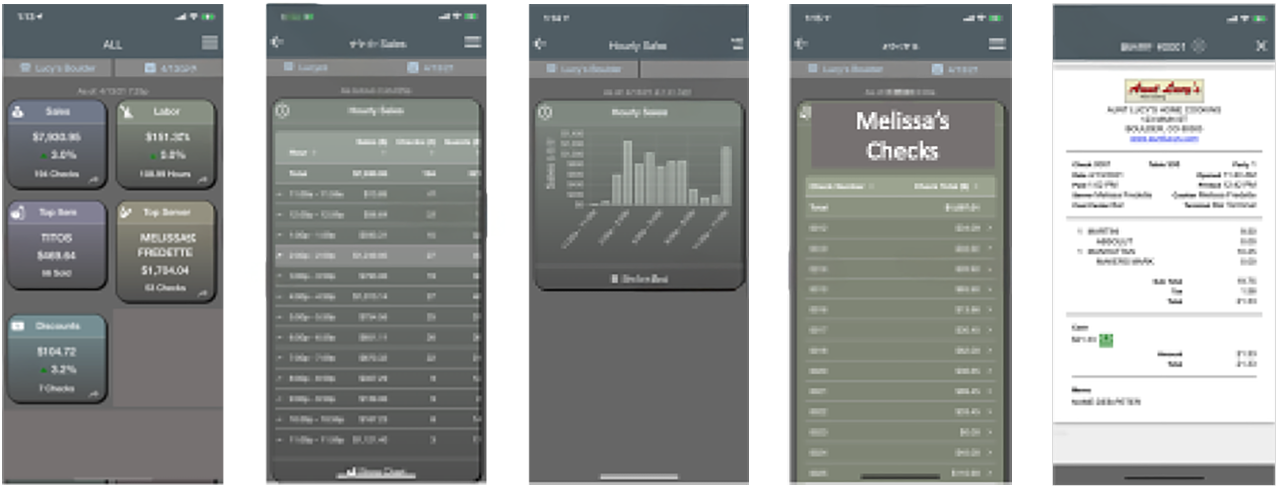
Current Shift4 Mobile Application
Objective
-
Streamline Operations: Create a mobile application integrated with existing systems to replace disconnected tools, improving operational efficiency, reducing manual work, and supporting multi-location management, ultimately lowering costs.
-
Enhance Decision-Making: Provide real-time, actionable insights to empower managers and owners to make informed decisions that boost profitability and resource allocation.
-
Ensure Consistent Service Quality: Develop solutions that standardize processes, enhance customer experiences, and drive customer loyalty to increase revenue.
-
Improve Staff Management: Design tools that simplify workflows, reduce stress, improve staff retention, and optimize labor costs for better financial outcomes.
1. EMPATHIZE
Tasks:
- Reviewed stakeholder requirements
- Educated on restaurant management and daily operations
- Conducted interviews with stakeholders and restaurant managers
- Shadowed restaurant managers
Reviewed Stakeholder Requirements
Key Findings:
- Integrated Mobile Application with Real-Time Insights: Develop a mobile solution that integrates with existing POS and inventory systems, providing actionable data on sales, staffing, and table management to streamline operations and support decision-making.
- User-Centric and Efficient Design: Ensure the application is intuitive and easy to use, reducing manual tasks, enhancing workflows, and improving both staff performance and customer satisfaction.
Conducted Interviews
Restaurant Managers
-
Inefficient Sales Tracking: Manual sales tracking took too much time, with managers calling for automated, real-time reporting to meet business demands faster.
-
Staff and Table Management Challenges: Managers struggled to monitor staff performance and manage table turnover, requesting tools for immediate insights and simpler solutions.
-
Order and Reservation Management Issues: Slow responses to order changes and inefficient reservation handling caused dissatisfaction, highlighting the need for a real-time system.
-
Limited Data Access: The lack of actionable insights on-the-go hindered decision-making, pointing to the need for robust analytics tools.
Stakeholders
-
Operational Visibility: Stakeholders needed tools providing a real-time, unified view of operations across locations for consistency and efficiency.
-
Revenue Optimization: Focus was on features that reduce inefficiencies and boost profitability through better data and resource management.
-
Scalability and Integration: A solution scalable across locations and seamlessly integrated with existing systems was a top priority.
-
Customer Experience Improvement: Tools enhancing service quality and ensuring consistency across locations were critical to maintaining customer loyalty.
“This would be so much easier if I could access real-time sales and staffing data from my phone. I could make quicker decisions and stay on top of my daily operations.”
Performed a Product Evaluation of the Current Software
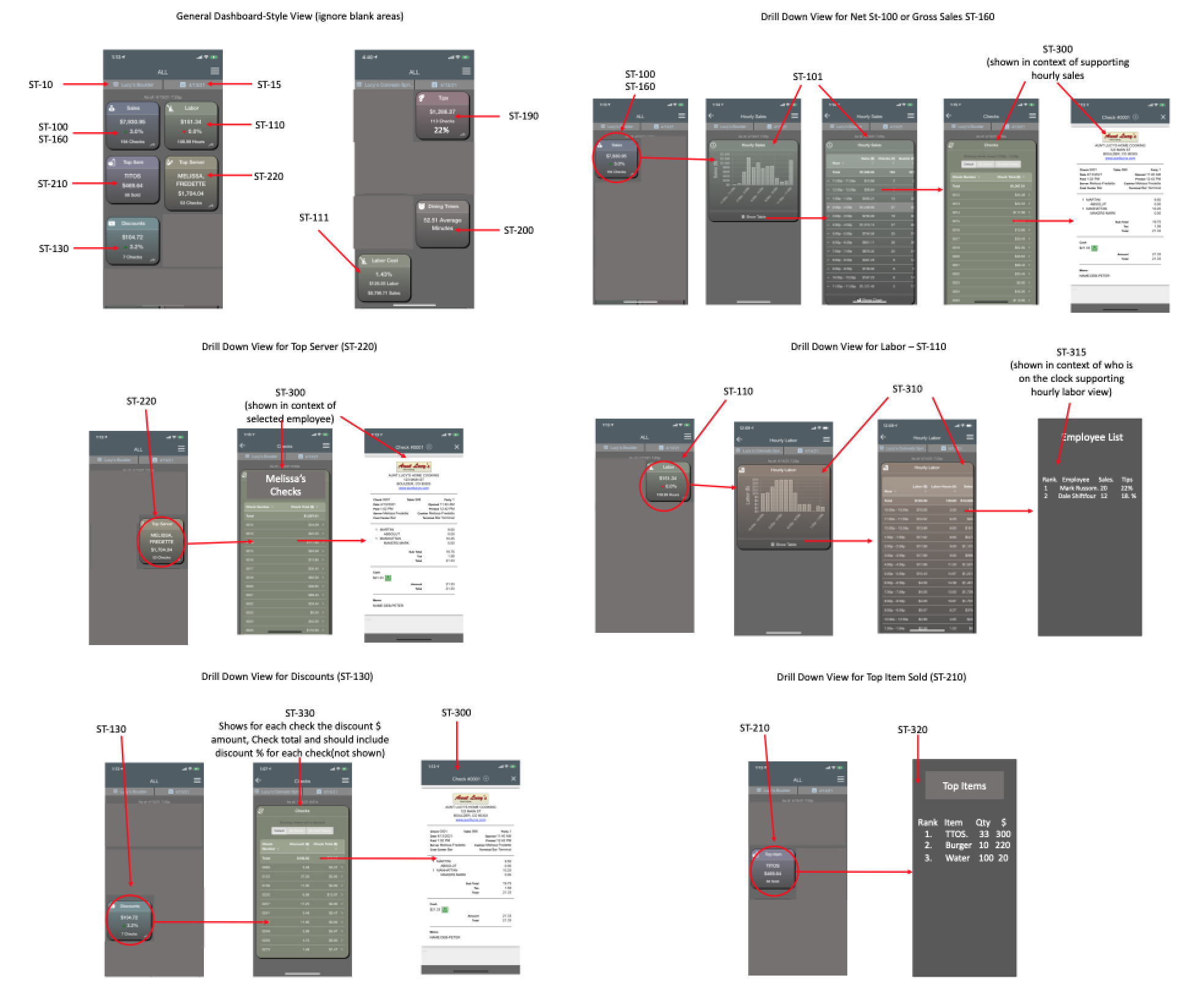
Shadowed Restaurant Managers and Employees

-
Scalable and Flexible Systems: Smaller restaurants needed quick access to essential functions, while larger establishments required detailed, department-specific tools to ensure scalability.
-
Operational Efficiency: High-volume restaurants demanded fast, responsive order and table management tools to maintain smooth operations.
-
Customizable Features: Managers needed adaptable app features tailored to specific operational styles and customer demographics.
-
Feedback Mechanisms: Effective in-app feedback tools were essential for identifying issues and driving continuous software improvements.
2. CONCEPTUALIZE
Tasks:
- Developed User Personas
- Conducted Foundational & Exploratory Research
- Created Sketches and Wireframes
Developed User Personas
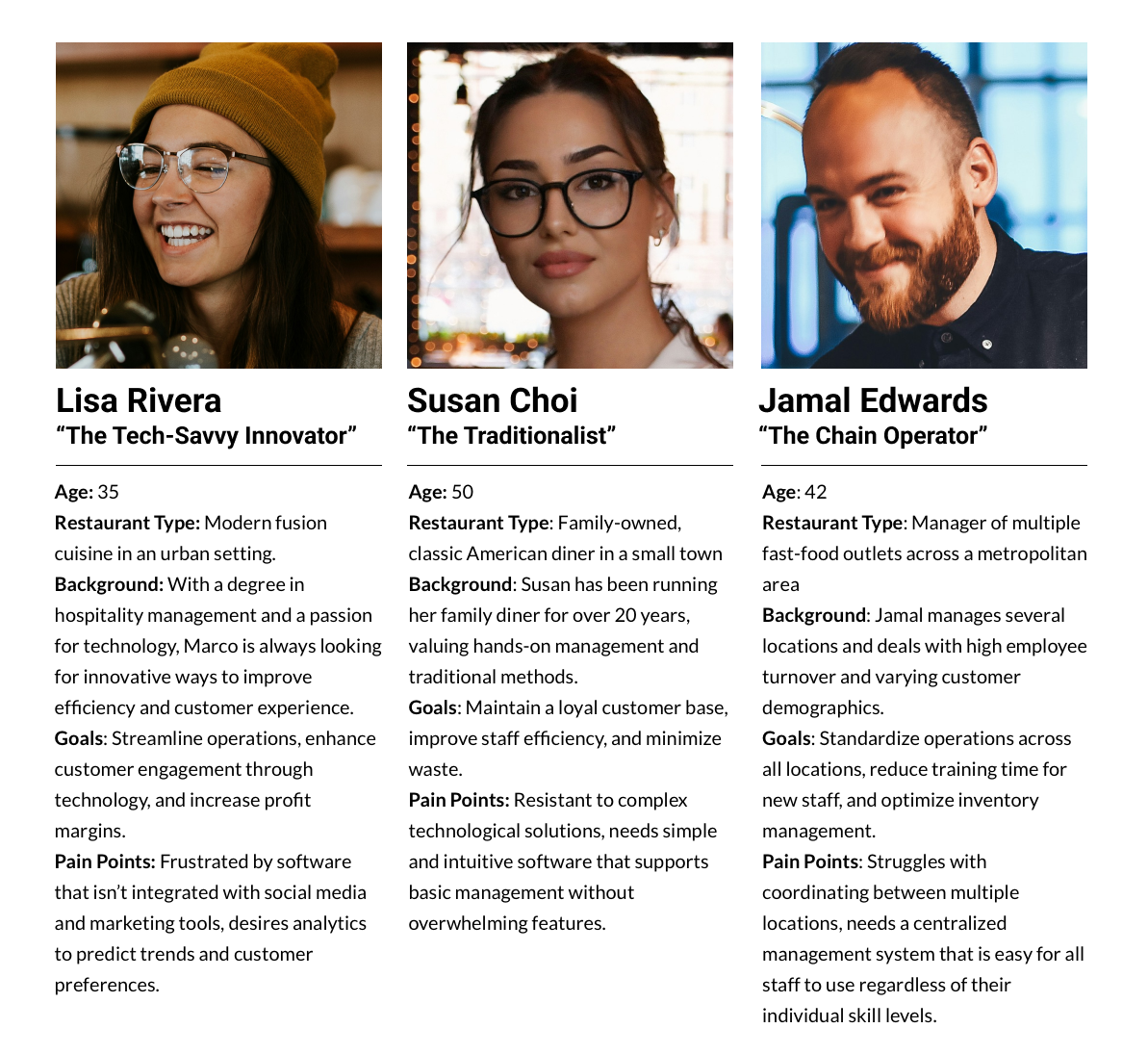
Key Findings:
-
Need for Advanced Technology: Managers require tools that enhance efficiency, predict trends, and provide data-driven insights to stay competitive.
-
Demand for Simplicity: A preference for straightforward, user-friendly tools that simplify daily operations and avoid unnecessary complexity.
-
Scalability and Standardization: Centralized systems that can manage multiple locations, ensure operational consistency, and support scalable growth.
-
Ease of Training and Adoption: Solutions that are simple to implement and train staff on, catering to varying levels of technical proficiency.
Conducted Foundational & Exploratory Research

Created Sketches & Wireframes
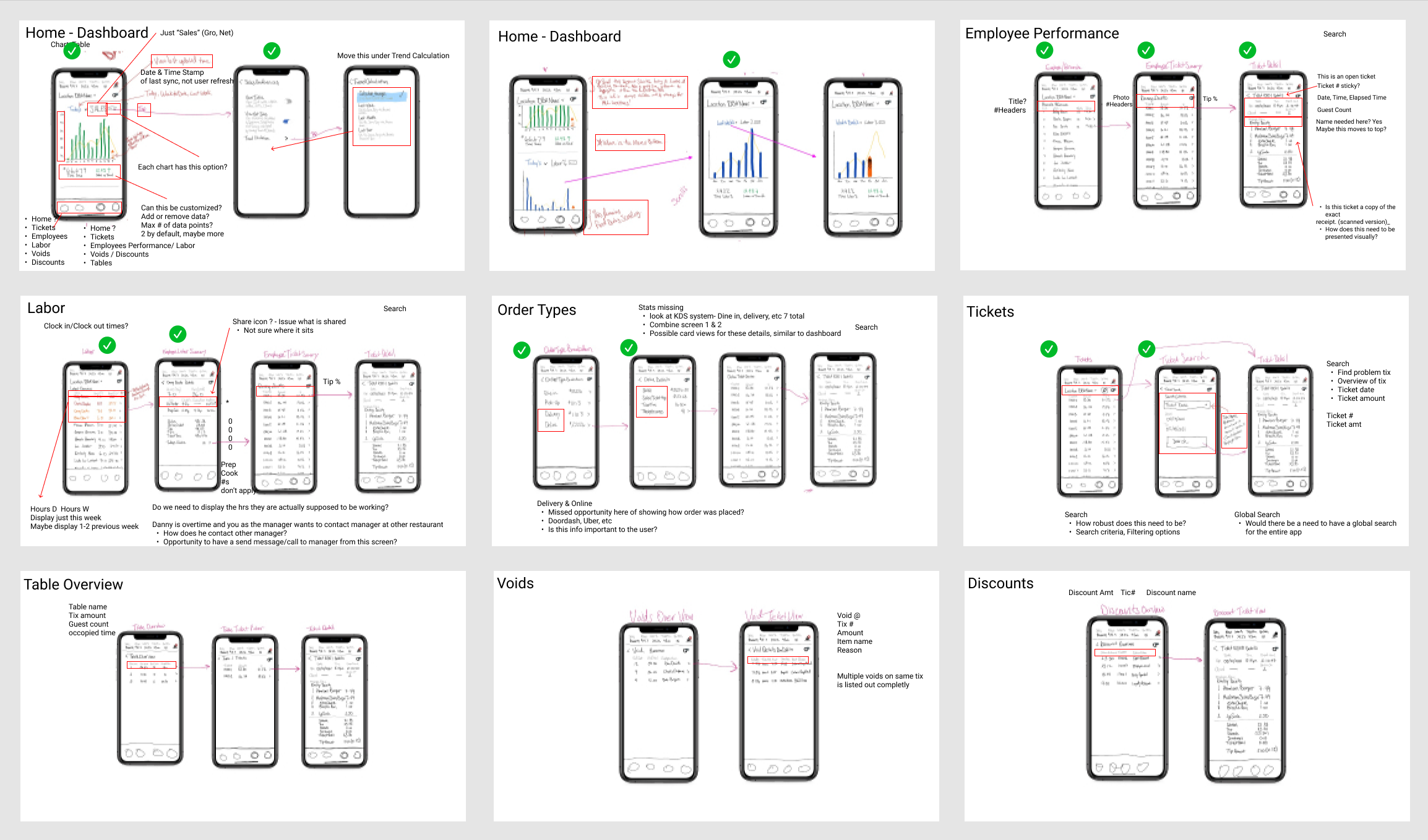
3. DESIGN
Tasks:
- Developed Prototype
- Conducted User Testing
- Build High-Fidelity Designs
- Created Design System
Developed Prototype & Conducted User Testing
These were new and updated features introduced into the prototype and tested with Restaurant Managers during user testing to evaluate the usability and effectiveness of the prototype.
-
Intuitive Reporting Tools: Managers found the reporting tools easy to use, simplifying the process of generating and understanding complex analytics, such as staff labor and performance, individual staff metrics, and overall sales within the restaurant. This enabled faster and more informed decision-making.
-
Customizable Dashboards: Strong positive feedback on the ability to customize dashboards allowed managers to prioritize data most relevant to their operations, including tables seated, sales trends, order types (dine-in, takeout, delivery, drive-thru), and sales performance metrics.
-
Mobile Optimization: The app’s responsive design ensured effective management on-the-go, eliminating reliance on desktop systems and increasing operational flexibility.
-
Integration with Existing Systems: Seamless integration with POS and inventory systems minimized disruptions, reduced the learning curve, and ensured compatibility with current workflows.
-
Alerts and Notifications: Customizable alerts for critical tasks, such as order shortages, staff check-ins, or notable customer loyalty trends and reviews, were highly valued for preventing oversights and improving crisis management.
PROJECT OUTCOMES
Key performance indicators (KPIs) are based on 6 months of user data collected from company analytics.
Restaurant Managers:
-
36% Less Time on Manual Tasks: Simplified workflows allowed managers to focus more on strategic priorities and customer engagement.
-
29% Faster Decision-Making: Easy access to real-time data enabled quicker and more confident choices.
-
24% Better Team and Customer Management: Tools for monitoring staff performance and utilizing customer feedback improved operational efficiency and overall satisfaction.
-
62% Increased Manager Satisfaction: Customizable features and an intuitive design reduced stress and improved daily task management.
Restaurant Owners / Company:
-
32% More Loyal Customers: Enhanced service quality and streamlined operations increased customer retention and repeat business.
-
42% Improved Management Across Locations: Streamlined processes and consistent operations made managing multiple sites more efficient.
-
28% Lower Costs with Smarter Insights: Reduced labor expenses and waste while leveraging analytics to make informed business decisions.
KNOWLEDGE GAINED
-
Real-Time Data Visualization: Providing managers with real-time access to data resulted in dynamic, easy-to-interpret dashboards and analytics. This experience will inform the creation of future tools that prioritize actionable, real-time insights for quick decision-making in other industries.
-
User-Centric Customization: Recognizing diverse needs across restaurant environments emphasized the importance of customizable app features tailored to workflows. In future projects, I will advocate for adaptable interfaces to accommodate varying operational needs.
-
Iterative Feedback Loops: Continuous user feedback refined the app’s features and usability, enhancing reliability and satisfaction. I will apply this approach in future projects to ensure solutions evolve based on real-world user input.
-
Accessibility and Inclusion: Designing for varying tech proficiency ensured the app was intuitive and accessible to all users. This learning reinforces my commitment to creating inclusive, user-friendly solutions in future designs.
-
Scalability and Integration: Developing solutions for single and multi-location operations deepened understanding of scalable, seamlessly integrated systems. I will leverage this knowledge to design flexible systems that grow with business needs in other contexts.
Final Designs
Dashboard (various sections)
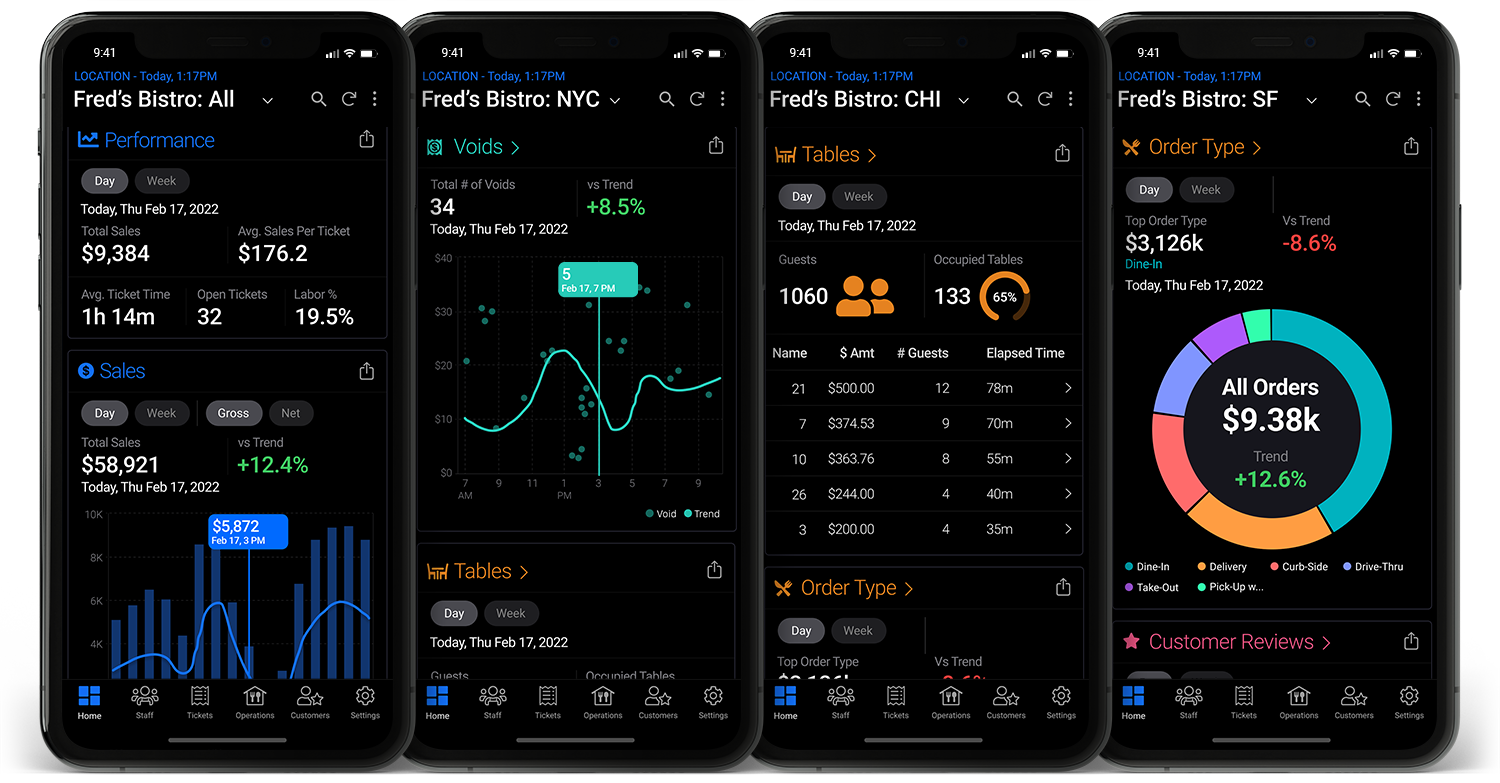
Sales: Locations & Trend Calculations

Staff Labor: Staff & Individual Performance
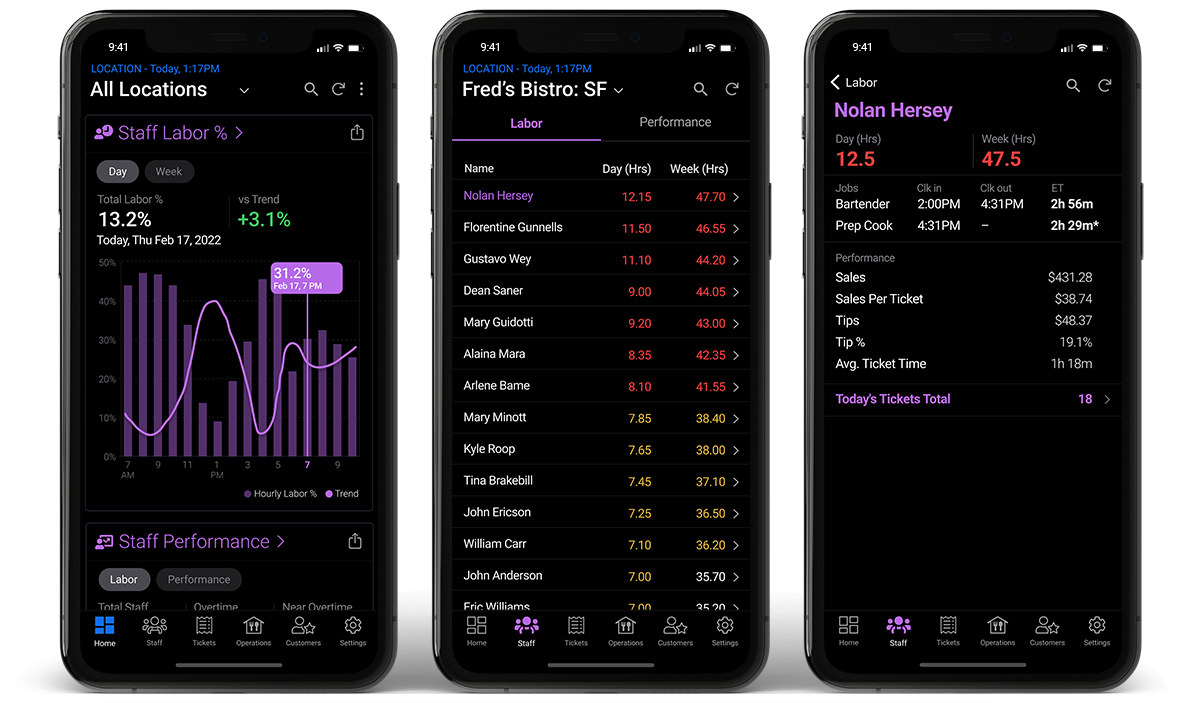
Staff Performance: Staff & Individual Performance

Tickets: Sales & Detail Overview
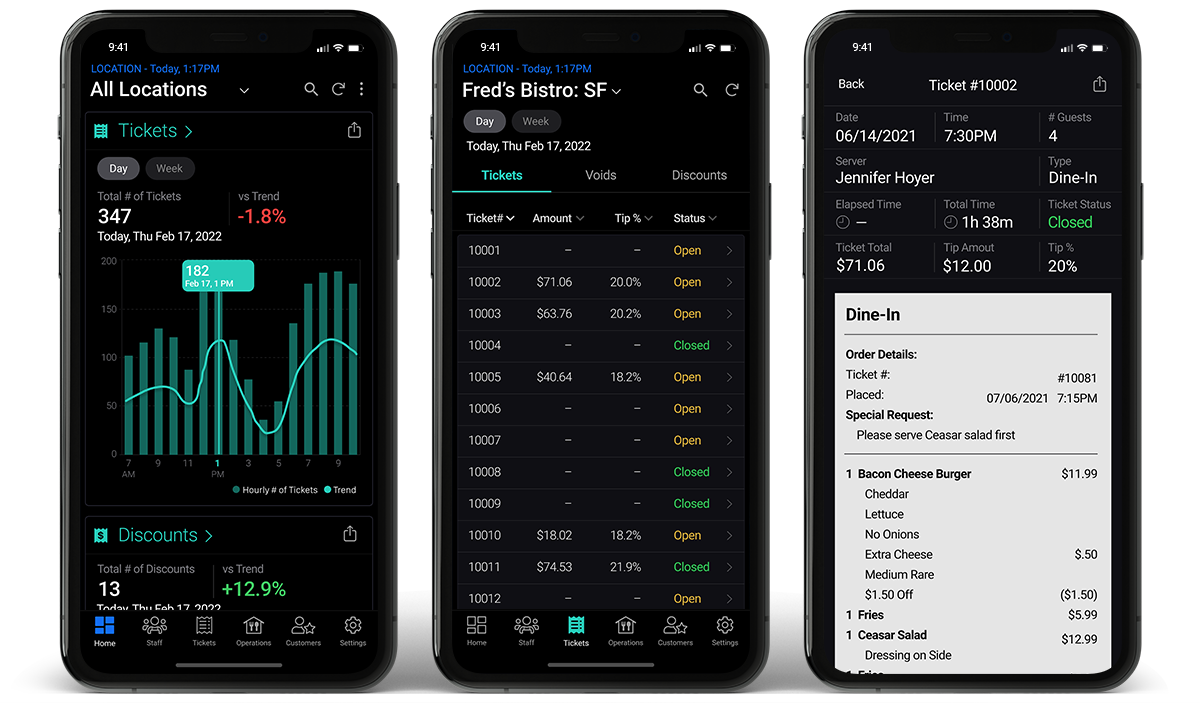
Tickets: Voids & Detail View
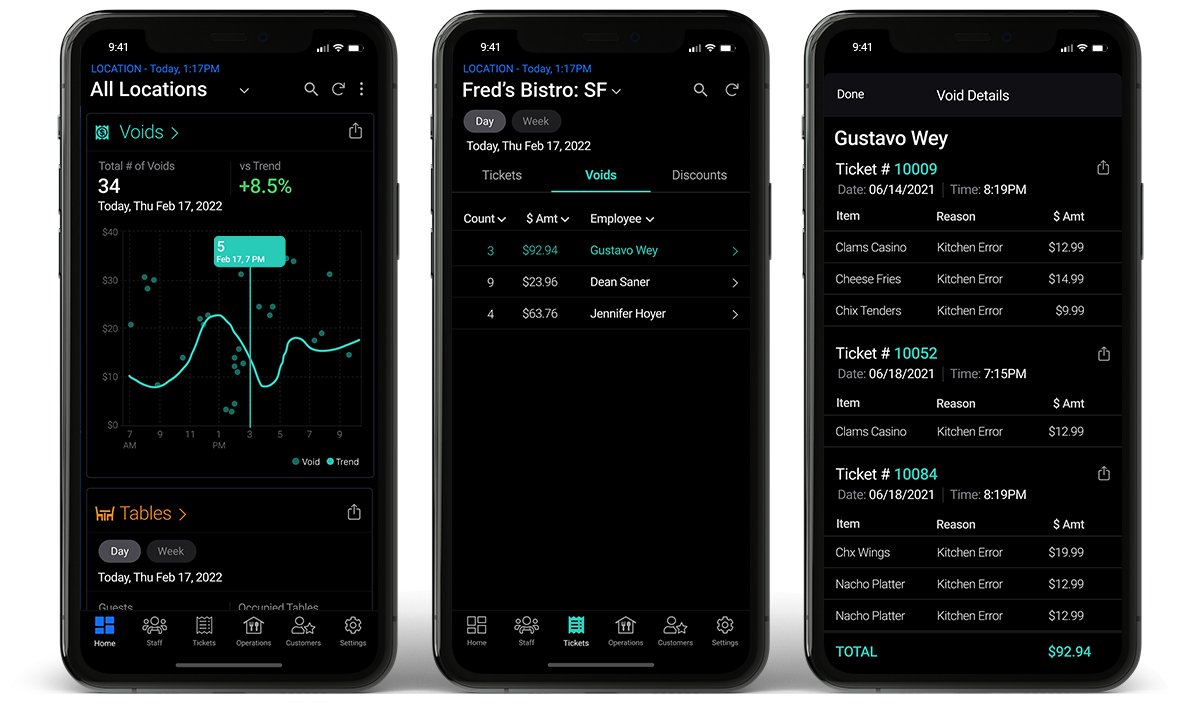
Tables: Overview & Detail View

Order Types: Overview & Detail View
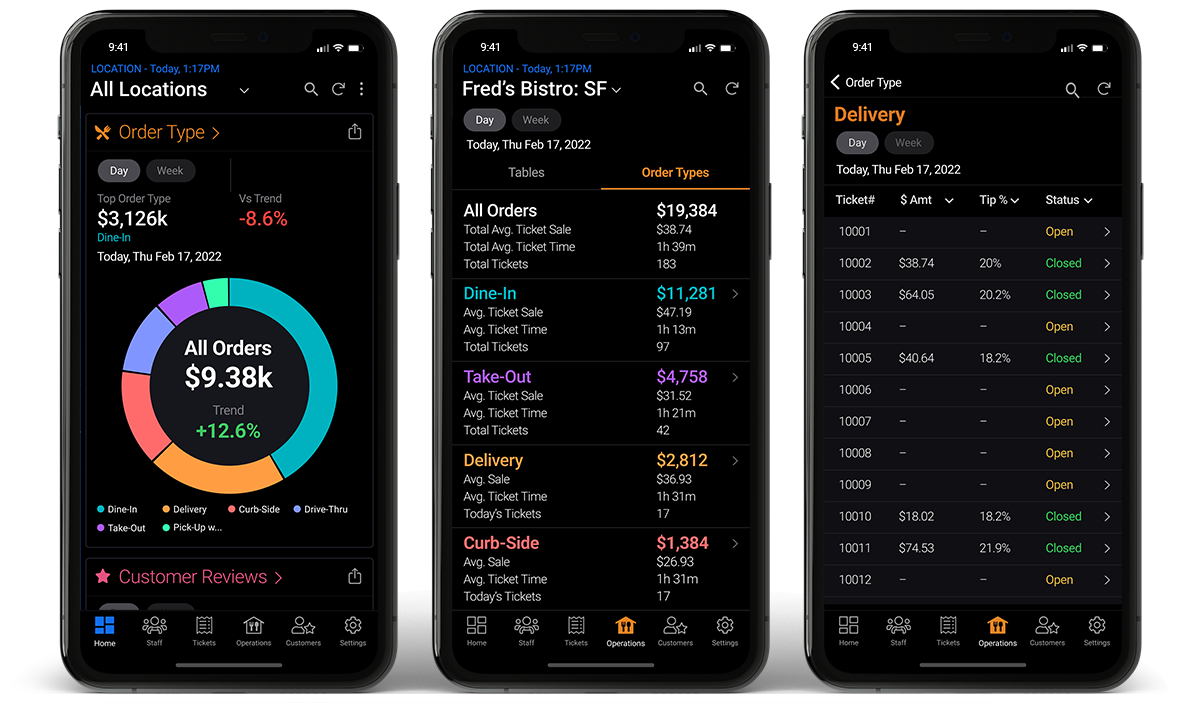
Customers: Loyalty Overview & Detail View

Customers: Review Overview & Detail View

Design System

